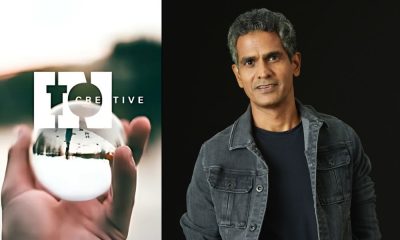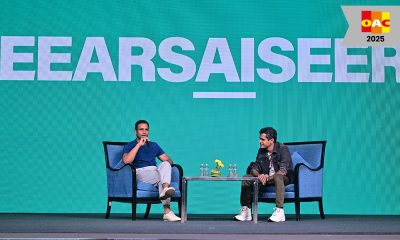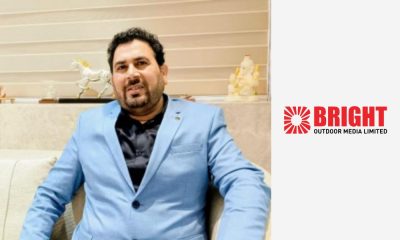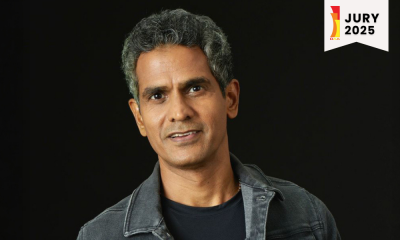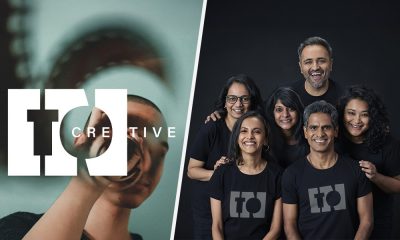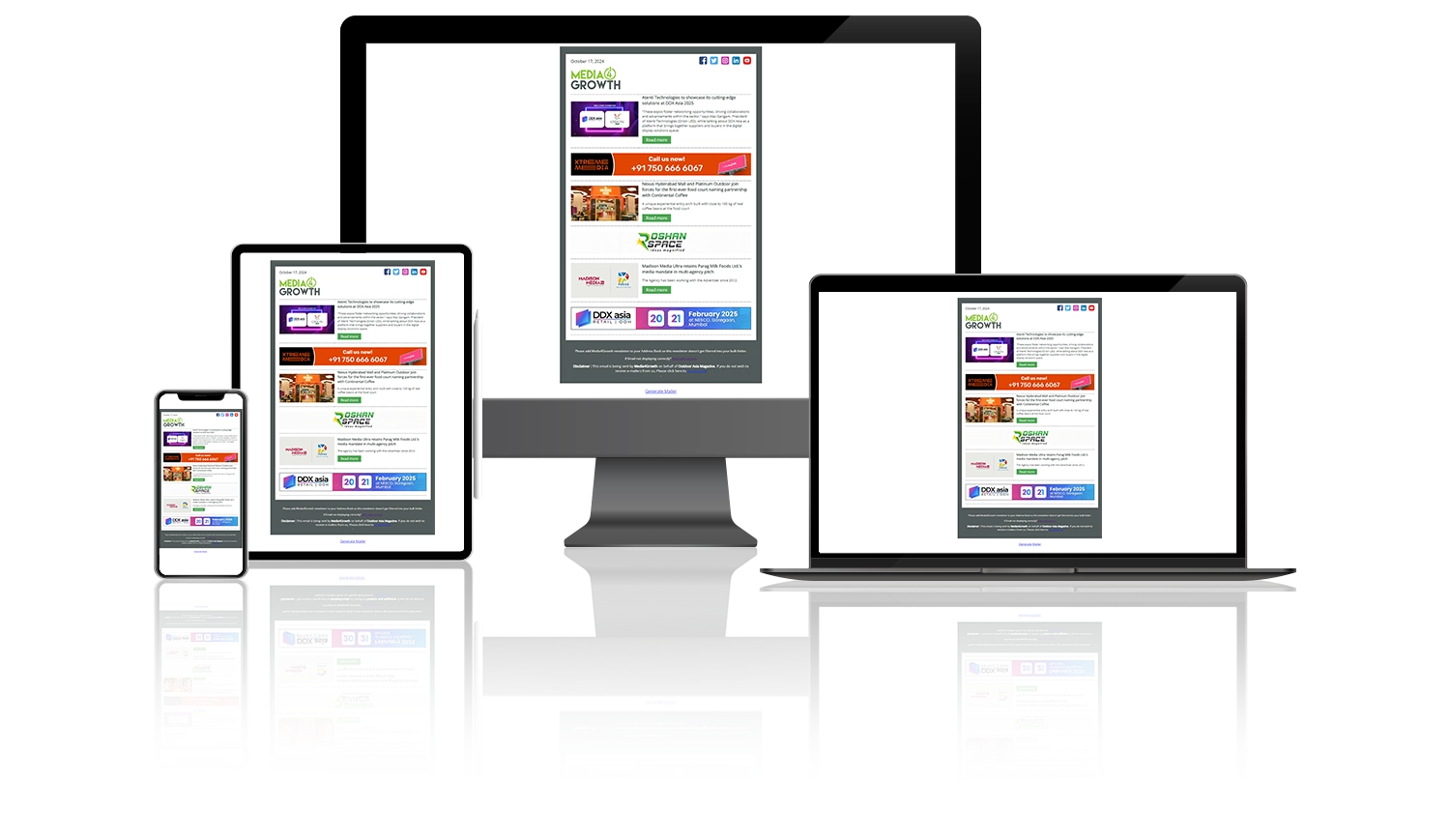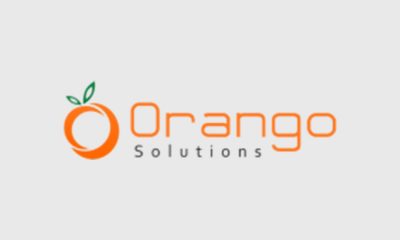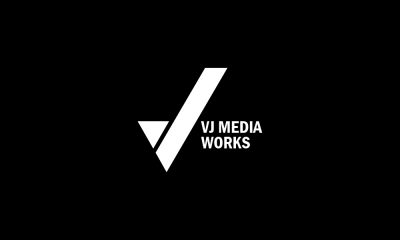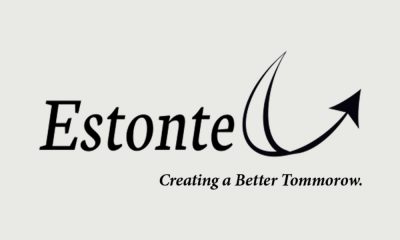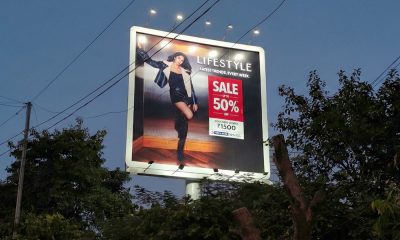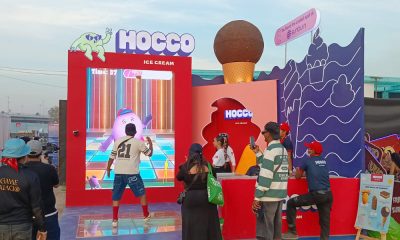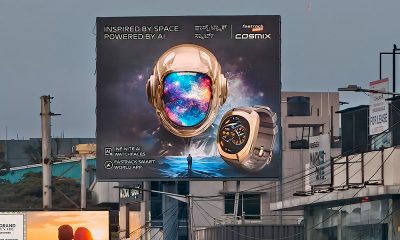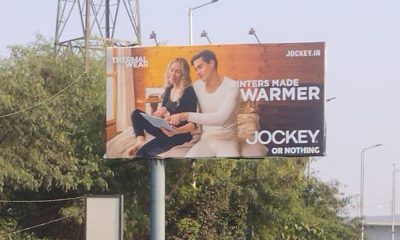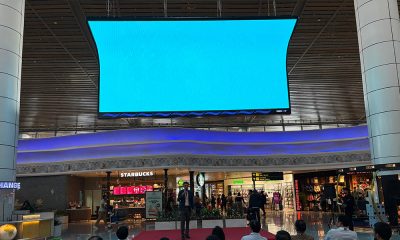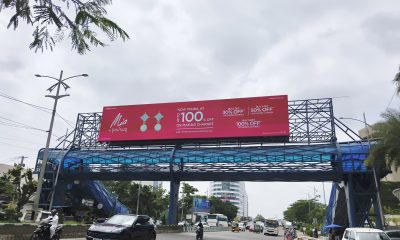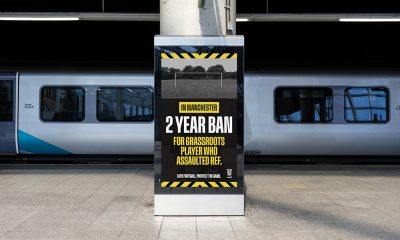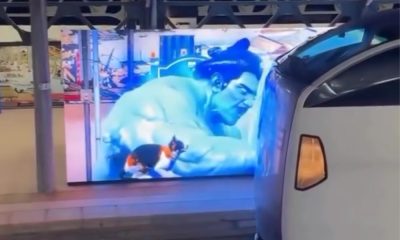Media Planning & Buying
Creating A Larger OOH Canvas: Opportunities & Challenges
Down the years, category advertisers like BFSI, media & entertainment, FMCG, telecom and real estate have had a domineering presence in the Indian OOH space. These brands have mainly used outdoor media like billboards to reach out to their target audiences. However, with new formats entering the OOH space, including digital formats, many other category advertisers are likely to go in for wide-scale OOH advertising.
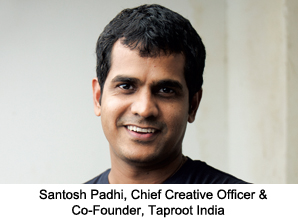 Change is in the air. The Indian OOH media is acquiring new dimensions, and there are expectations the medium will attract a greater number of advertising brands in the foreseeable future. However, in the process the industry will need to address some of the long-standing issues that experts suggest could be show-stoppers.
Change is in the air. The Indian OOH media is acquiring new dimensions, and there are expectations the medium will attract a greater number of advertising brands in the foreseeable future. However, in the process the industry will need to address some of the long-standing issues that experts suggest could be show-stoppers.
Providing an overall perspective of the OOH advertising trends in India, Santosh Padhi, Chief Creative Officer & Co-Founder, Taproot India, says, “Sectors like BFSI, media & entertainment, FMCG, telecom, and real estate are comparatively spending more on this media. But the moot point is, are these categories being catered to in the best possible manner. Just putting up a message in the outdoor is not enough; it has to be done in an interesting fashion.
Padhi adds that “this is a high potential media and one expects that even on the traditional formats, the design and content should force one to stop for a few seconds to see the ad. With technology coming in, the possibilities in outdoor are many.
“We have observed that when it comes to the outdoor, it gets influenced by some pre-conceived notions. People feel that as it works as a reminder media, the core message has to be highlighted only in the outdoor and the rest of the promotional activity will be executed in other mediums. In this era of specialisation, where there are so many specialist agencies, an outdoor campaign should be more out-of-home specific, he observed.
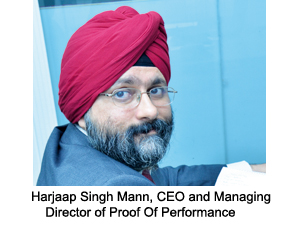 A keen understanding of the nuances of the industry is of vital importance to all stakeholders concerned. There is also the additional challenge of having to do business without access to standard measurement metrics to determine the ROI for clients.
A keen understanding of the nuances of the industry is of vital importance to all stakeholders concerned. There is also the additional challenge of having to do business without access to standard measurement metrics to determine the ROI for clients.
On this, Harjaap Singh Mann, CEO and Managing Director of Proof Of Performance, says, “The advertising clients would want to measure their spends and determine the ROI. They expect accountability and transparency from the media agencies/owners. Hence, more and more clients are opting for third party compliance audits on their OOH campaigns.
Sujoy Roy, Creative Director, Ogilvy & Mather, says, “I am hopeful that brands will increase their spends on OOH but the transformation or evolution of this media will not happen overnight. It will call for substantial investments. Just like the entire advertising industry including creative agencies, the specialist agencies are also going through a change in the entire process. The outdoor needs to go through such a phase.
New Brands In The Fray
While the existing category advertisers have arguably stepped up their OOH spends, new category entrants are few and far between. Anita Nayyar, CEO – India & South Asia, Havas Media Group, says, “E-commerce is a new entrant in the medium. Clients like Quikr and Snapdeal are very active on different OOH formats. In fact, Quikr advertising in Delhi NCR is one of the finest examples of using outdoor innovatively – from large hoardings to unipoles, bus stops, and painting the cyber hub in Gurgaon.
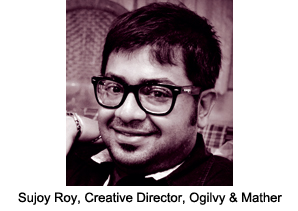 Nayyar notes that “in the case of education institutes, they aim for top-of-the-mind recall. The brand promise for this category has to be understood through engagement with the brand which does not lend itself to OOH.
Nayyar notes that “in the case of education institutes, they aim for top-of-the-mind recall. The brand promise for this category has to be understood through engagement with the brand which does not lend itself to OOH.
“Recent trends shows that OOH advertising by educational institutes are on the rise because more and more private universities are opening every day and even schools for that matter. Even advertisements on competitive exams/coaching classes are increasing at a steady pace, says Nayyar.
Padhi points out that “educational institutes essentially use this media during the admission season, for a duration of two months and mainly in the metros and Tier I cities. OOH being a very specific local media and since the months of April and May make up the wedding season, jewellery brands also use OOH in a big way. From August onwards, many other advertisers from different sectors use the OOH media for festive campaigns like garments, f&b and so on.
“In summer season, beverages increase their budget for OOH campaigns. Thus it is very seasonal. So, brand marketers will have to understand these factors while utilising the OOH space in their own favour. There is a pattern in OOH advertising which the advertisers tend to follow. New trends will emerge with time and 20 per cent will experiment and the rest 80 per cent will go with the traditional norms, says Padhi.
Roy adds that “educational institutes can use innovative ways to leverage this media in a very big way. For example, there could be a billboard teaching a new word through it and it can be a great language class for the people who pass by. Similarly, a category like health sector is nowadays getting attracted to outdoor and it is also possible for them to showcase their services in a very interesting manner through OOH.
Attracting High-end Brands
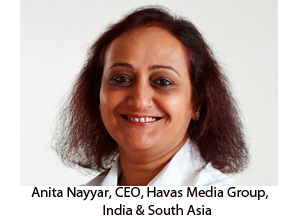 The outdoor advertising industry has been constrained in drawing high-end brands into its fold. Nayyar comments: “Currently the Indian outdoor industry is not geared for high-end luxury brand advertising. However, ambient media, especially malls and airports, do provide the relevant environment for these brands. Improving quality and introducing new synergistic formats will be key to getting these brands to use the medium.
The outdoor advertising industry has been constrained in drawing high-end brands into its fold. Nayyar comments: “Currently the Indian outdoor industry is not geared for high-end luxury brand advertising. However, ambient media, especially malls and airports, do provide the relevant environment for these brands. Improving quality and introducing new synergistic formats will be key to getting these brands to use the medium.
Mann adds that “the outdoor infrastructure is there but the punch was missing for long. But more recently the Indian outdoor industry has seen some really massive campaigns which make me believe that we have come a long way from being a country where wall wrap was the only outdoor innovation. Today, agencies and brands are not shying away from experimenting, be it in the use of NFC or Augmented Reality in the outdoor space. So, I believe the time has come for India to announce its presence to the world, because we have more eyeballs to be captured than the entire South East Asia combined.
Will tech-laced innovations attract premium brands? To this, Nikhil Rangnekar, CEO, Spatial Access Private Limited, says, “The biggest challenge is lack of standard OOH measurement metrics. Outdoor has not evolved in comparison with other media formats which are present in India. The OOH has been limited to traditional billboards – front lit and back lit. Sometimes we see some innovations happening, like a real model of a helicopter that was installed near Mahim Causeway, Mumbai. But these are very rare. More innovative ideas and technological developments will give impetus to the different categories and especially the high-end brands to take their campaigns to a different level.
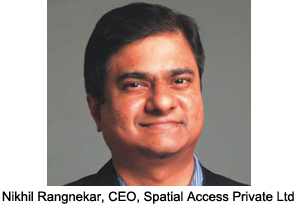 Nayyar feels, “Innovations both in the medium as well as formats and their availability in locations of choice and those that matter will further enhance the usage of the medium. Use of interactive features like QR codes will add to the medium’s attractiveness for advertising.
Nayyar feels, “Innovations both in the medium as well as formats and their availability in locations of choice and those that matter will further enhance the usage of the medium. Use of interactive features like QR codes will add to the medium’s attractiveness for advertising.
Pertinent to note that cities like Mumbai are making the outdoor sites premium; the bony structure does not show and there is an art direction for the sites. The kiosks are not covered with leaves and they try to monitor the situation on a regular basis. But that is note the case in most other OOH markets around the country.
Mann says, “Brands are keen to experiment with the innovations and they know they need to stand out in the clutter. For many brand managers, OOH has established its credibility and they are willing to put more weight behind it. The brands are now keen to go deeper and are questioning the planning process and the reasons and logic behind site selections. A good balance of science and art is required for the benefit of the industry. Digital will also allow dynamic planning of campaigns. The communication can change with the time of day, week or certain events could trigger it. The ability of the planner to react to this will give an edge. If there is a traffic diversion, and the traffic count on a certain stretch is going to be high on a particular day or in a particular week, then the plan can be tweaked to leverage this insight.
Roy adds: “At O&M we did a campaign on Star Jalsha a 24×7 entertainment channel, where the outdoor flexes were re-used to create bags and we spread the message of recyclable goods. The outdoor media should therefore also highlight some greater benefits delivered to society at large, he asserts.
As regards the impact of OOH advertising, he says that “the campaign should have such an effect on me that it should inspire me to post about it on social media or YouTube. For example, McDonalds actually grew some salad on a hoarding. Also, last year we saw a great work which was awarded at Cannes, where a billboard absorbed the moisture in the air and provided drinking water. This industry should gear up to showcase more innovations like this and only then different sectors will be attracted to invest more on outdoor.
Padhi agrees, “There is huge potential in OOH and some brands are going for great innovations but the medium cannot be the idea, we need to understand the pattern of communication, how the message is put across, what will have an impact on the TG. Just a mere cut-out or moving object in the outdoor will not serve the purpose. The industry will have to understand the potential of OOH in terms of leveraging the impact. If a TVC is talking about 20 things on a particular brand, and the outdoor campaign is a smaller copy pasted version of the same electronic campaign, then it is a major issue.
OOH should harp only on the “Moral of the Story as we have very little time on hand to make an impact on the minds of the consumers. “A lot of ideas are there in the Western markets which matches with the advanced media formats there. We can look for inspiration from those campaigns, says Rangnekar.
Alternative OOH Media Solutions
To get the best out of outdoor, brands are also using alternative OOH media solutions like Volvo bus branding or cab branding. These options may appeal to telecom service providers or even high-end brands as they ensure greater visibility, but the factors like mobility and the amount of footfall generated should be measured to give out a concrete data on its effectiveness and what it delivers.
Roy mentions, “We need to create high impact zones for the brands. In India we do not experiment much with building wraps, but there is scope for using drop downs on skyscrapers — their numbers are constantly increasing.
“Wall paintings in the interior markets are done by cement and at times telecom companies and it works really well for these verticals. In the cities we can also do that and it will beautify the city and give the brands immense visibility, by creating an illustrated design-space in public places. But the authorities should also welcome such innovations. Interesting designs on Metro rail can leverage great amount of business and the brands can have greater recall value but again the metro railway boards should be prepared to adopt such ideas in the different cities where the new lines are coming up, he says.
Media Planning
OOH industry needs to speak the language of media planners. Mann says, “If it is data they need, then it is data we should be ready with. A GRP or an equivalent ORP : Outdoor Rating Point is possible for various stretches and junctions, and the coverage can increase. The tools available can also be used to create price optimisers, to allow planners to see various options for the campaigns being planned.
Padhi says, “If the media planners are ready to invest in OOH keeping in mind the different aspects of outdoor as a leveraging media, then they must show it in their planning. There are a lot of specialist agencies who are offering those special services, like our creative agency looks into the creative part and the media buying agency works out the other areas. The brand has to come to us and inform that this is our plan and we are focusing on the outdoor for this campaign; then our planning starts around that. The creative agency does not decide the media, it depends on the brand. It may happen that once the core message of the product is prepared by the creative agency, the brand team may suggest that we launch 500 OOH sites in five different cities for this campaign.
Roy is of the opinion that “while framing a campaign with the media planners we will have to see that the brand has some sort of design impact when it comes to an outdoor initiative, which sometimes do come from the agencies but unfortunately in the Indian scenario, the brands professionally cannot afford high-end media planning solutions. Intelligent solutions should come up rather than reacting to the advertisement. Whenever we plan a campaign the specified TG should be directly influenced. As there is lack of proper measurement technology, the brands will have to be very clever in determining the ROI.
Thus planners need to be made aware of the opportunities OOH provides so that its relevance is understood by them and the medium may become a greater part of the multimedia communication strategy.
Way Forward
In experimenting with the OOH media, a collaborative approach is needed when it comes to brands, solution providers, media owners, creative agencies by using good quality options for formats, innovations and use of digital OOH.
